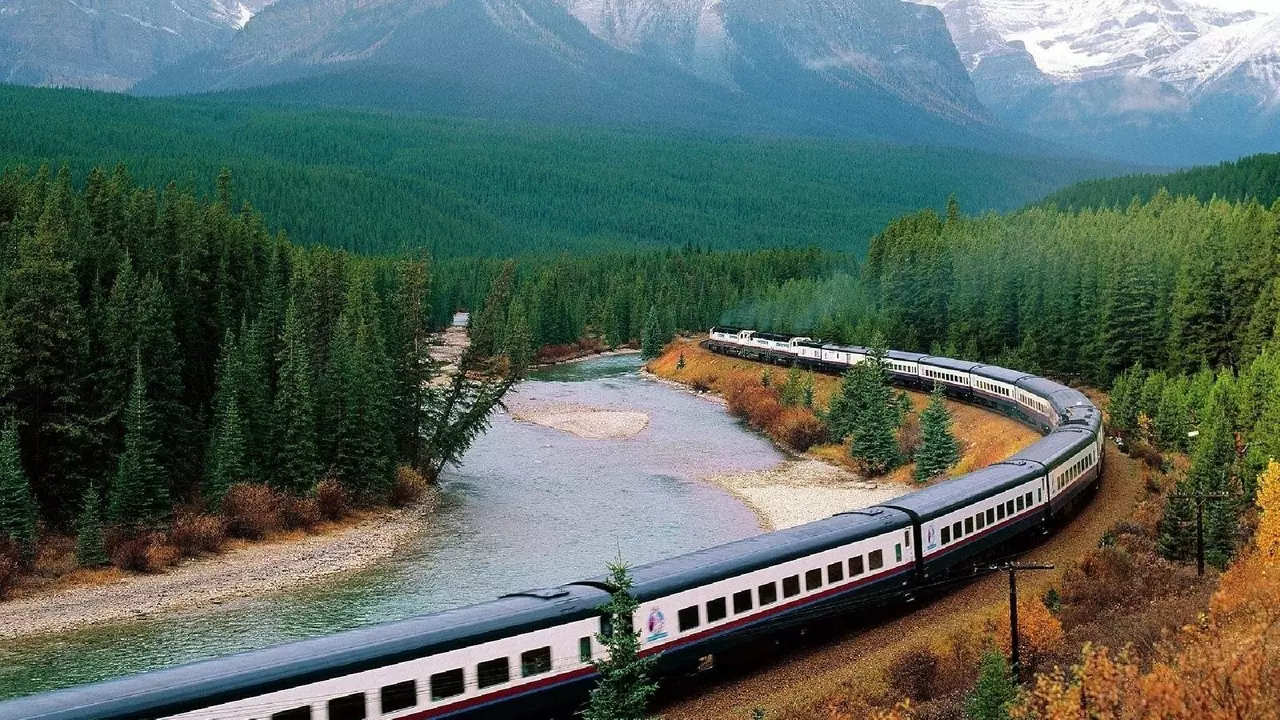
Introduction to Mountain Sickness
As an avid hiker and mountaineer, I have experienced the challenges of mountain sickness firsthand. Mountain sickness, also known as acute mountain sickness (AMS), is a common condition that affects climbers, trekkers, and travelers at high altitudes. In this article, I will share my knowledge and experience to help you train your body to withstand mountain sickness. I will discuss various techniques and strategies that I've learned over the years. So, let's dive in!
Understanding Mountain Sickness
Before we discuss how to train your body to withstand mountain sickness, it's crucial to understand what it is and why it happens. Mountain sickness occurs when our bodies don't have enough time to adapt to the decreased oxygen levels and changes in air pressure at high altitudes. Symptoms can range from mild headaches and dizziness to severe life-threatening conditions like high-altitude cerebral edema (HACE) and high-altitude pulmonary edema (HAPE).
By knowing the causes and symptoms of mountain sickness, you'll be better prepared to identify the early warning signs and take appropriate action to prevent or manage the condition.
Gradual Acclimatization
One of the most effective strategies to prevent mountain sickness is gradual acclimatization. This involves taking time to adjust to the altitude by ascending slowly and giving your body enough time to adapt to the lower oxygen levels and changes in air pressure. Experts recommend not to ascend more than 1,000 feet (300 meters) per day above 8,000 feet (2,400 meters) and to take a rest day for every 3,000 feet (900 meters) gained.
By following these guidelines, you can significantly reduce your risk of mountain sickness and ensure a safer and more enjoyable experience at high altitudes.
Proper Hydration
Staying well-hydrated is essential for preventing mountain sickness. At high altitudes, your body loses water more quickly due to increased respiration and lower humidity levels. Dehydration can exacerbate the symptoms of mountain sickness and delay acclimatization.
To maintain proper hydration, aim to drink at least 3-4 liters of water per day, and monitor your urine color to ensure it's a pale yellow. Avoid alcohol and excessive caffeine consumption, as they can dehydrate you further.
Physical Fitness and Training
Being physically fit and well-prepared for your high-altitude adventure can help your body cope better with the demands of the reduced oxygen levels. Incorporate a regular exercise routine that includes cardiovascular workouts, strength training, and flexibility exercises. In the weeks leading up to your trip, increase the intensity and duration of your workouts to simulate the physical demands of your high-altitude adventure.
Proper training can improve your body's ability to transport oxygen, making it more resilient to the effects of mountain sickness.
Breathing Techniques
Practicing specific breathing techniques can help your body adapt to the reduced oxygen levels at high altitudes. One such technique is called pressure breathing. To perform this method, take a deep breath in, and then forcefully exhale through pursed lips. This increases the pressure in your lungs, helping to push more oxygen into your bloodstream.
Practicing pressure breathing during your ascent can help improve your oxygenation levels and reduce the symptoms of mountain sickness.
Nutrition and Diet
Maintaining a balanced and nutritious diet is essential for supporting your body's ability to adapt to high altitudes. Ensure you consume enough carbohydrates, as they provide the energy required for your body to function optimally at high altitudes. Additionally, include foods rich in antioxidants, such as fruits and vegetables, to help combat oxidative stress caused by the reduced oxygen levels.
Supplementing with iron-rich foods or supplements can also help improve your body's ability to transport oxygen, further reducing your risk of mountain sickness.
Medication and Supplements
In some cases, taking medication or supplements can help prevent or manage mountain sickness. The most commonly prescribed medication for mountain sickness prevention is acetazolamide (Diamox). This drug helps your body acclimatize more quickly by increasing the amount of bicarbonate excreted in your urine, which in turn stimulates your breathing and improves oxygenation.
Always consult your doctor before taking any medication or supplements, as they can provide personalized advice based on your health history and specific needs.
Know Your Limits and Listen to Your Body
Finally, it's essential to know your limits and listen to your body. If you start experiencing symptoms of mountain sickness, it's crucial to take action immediately. This may involve descending to a lower altitude, taking medication as prescribed by your doctor, or in severe cases, seeking emergency medical attention.
By recognizing the warning signs and knowing when to take action, you can ensure a safe and enjoyable experience on your high-altitude adventure.
Conclusion
Training your body to withstand mountain sickness is all about understanding the condition, taking the proper precautions, and listening to your body's signals. By following the strategies and techniques discussed in this article, you'll be better prepared to enjoy your high-altitude adventures safely and confidently. Happy climbing!






Ramesh Deepan
May 29, 2023 AT 21:58Gradual acclimatization is the real game changer. I did a trek in the Himalayas and pushed too hard on day two-ended up in a camp with oxygen tanks. Learned the hard way. Now I take it slow, rest every 300 meters, and it makes all the difference.
Matt Renner
May 30, 2023 AT 07:10While hydration is critical, many overlook the role of electrolyte balance. Sodium, potassium, and magnesium are essential for maintaining plasma volume and preventing hyponatremia at altitude. I recommend adding a pinch of sea salt to each liter of water and consuming potassium-rich foods like bananas and spinach.
Wayne Rendall
May 31, 2023 AT 03:40Pressure breathing is an underutilized technique. The mechanics are sound-increasing intrapulmonary pressure enhances alveolar oxygen diffusion. However, it requires consistent practice; it’s not intuitive. I’ve trained clients using diaphragmatic breathing drills before ascent, and the improvement in SpO2 levels was measurable.
Ifeoluwa James Falola
May 31, 2023 AT 16:23Listen to your body. That’s it.
Julie Lamb
May 31, 2023 AT 18:14This is so helpful!! I’m planning my first big hike next month and was terrified of AMS. You just made me feel way more confident 😊❤️
april kakoske
June 1, 2023 AT 04:05we’re all just atoms trying to breathe in thin air huh
the mountain doesn’t care if you’re fit or not
it just is
you either adapt or you become part of the rock
no judgment just altitude
Kshitij Nim
June 1, 2023 AT 22:07Don’t forget about pre-acclimatization. I’ve used altitude tents for 3–4 weeks before big climbs. It’s expensive but it cuts down your AMS risk by half. Also, sleep low, climb high-that’s the golden rule. I’ve seen people ignore this and pay the price.
May Zone skelah
June 2, 2023 AT 22:05It’s fascinating how modern society has detached us from our ancestral physiological rhythms. We’ve replaced natural adaptation with pharmaceutical crutches like Diamox. We’ve forgotten that the human body, when respected and allowed to move at its own tempo, possesses an innate wisdom far superior to any synthetic compound. I’ve seen climbers on Diamox gasping at 4,000 meters while those who walked slowly, ate root vegetables, and meditated before sleep-breathe like monks, really-summit effortlessly. It’s not about training. It’s about alignment.
Adam Phillips
June 3, 2023 AT 16:27why do people overcomplicate this
just go slow drink water dont drink alcohol and if your head hurts go down
thats it
no need for science or philosophy
Dale Yu
June 3, 2023 AT 19:45you think you’re deep but you’re just lost in your own head
the mountain doesn’t give a fuck about your meditations
if you don’t acclimatize you die
stop pretending you’re a guru and start listening to real data
Rishabh Jaiswal
June 3, 2023 AT 21:45u said pressure breathing but u misspelled it its pressure brething not breathing lol
also i tried it on everest base camp and it didnt work so its fake
just take diamox and chill
Pradeep Meena
June 4, 2023 AT 10:04you westerners always overthink everything
in India we climb Everest without any of this
we just eat chapati and walk
your science is weak
we have soul